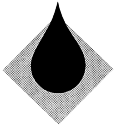 |
 |
 |
 |
| Chapter 6 - Page 1 |

Water is one of your most urgent needs in a survival situation. You can't live long without it, especially in hot areas where you lose water rapidly through perspiration. Even in cold areas, you need a minimum of 2 liters of water each day to maintain efficiency.
More than three-fourths of your body is composed of fluids. Your body loses fluid as a result of heat, cold, stress, and exertion. To function effectively, you must replace the fluid your body loses. So, one of your first goals is to obtain an adequate supply of water.
Almost any environment has water present to some degree. Table 6-1 lists possible sources of water in various environments. It also provides information on how to make the water potable.
| Environment | Source of Water | Means
of Obtaining and / or Making Potable |
Remarks |
| Frigid areas | Snow and ice | Melt and purify | Do not eat without melting!
Eating snow and ice can reduce body temperature and will lead to more
dehydration.
Snow and ice are no purer than the water from which they come. Sea ice that is gray in color or opaque is salty. Do not use it without desalting it. Sea ice that is crystalline with a bluish cast has little salt in it. |
|
|
|||
| At sea | Sea | Use desalter kit. | Do not drink seawater without desalting. |
|
|
|||
| Rain | Catch rain in tarps or in other water-holding material or containers. | If tarp or water-holding material has become encrusted with salt, wash it in the sea before using (very little salt will remain on it). | |
|
|
|||
| Sea ice | See remarks above for frigid areas. | ||
|
|
|||
| Beach | Ground | Dig hole deep enough to allow water to seep in; obtain rocks, build fire and heat rocks; drop hot rocks in water; hold cloth over hole to absorb steam; wring water from cloth. | Alternate method if a container or bark pot is available: Fill container or pot with seawater; build fire and boil water to produce steam; hold cloth over container to absorb steam; wring water from cloth. |
|
|
|||
| Desert | Ground
|
Dig holes deep enough to allow water to seep in. | In a sand dune belt, any available water will be found beneath the original valley floor at the edge of dunes. |
|
|
|||
| Cacti | Cut off the top of a barrel
cactus and mash or squeeze the pulp.
Caution: Do not eat pulp. Place pulp in mouth, suck out juice, and discard pulp. |
Without a machete, cutting into a cactus is difficult and takes time since you must get past the long, strong spines and cut through the tough rind. | |
| Depressions or holes in rocks | Periodic rainfall may collect in pools, seep into fissures, or collect in holes in rocks | ||
|
|
|||
| Fissures in rocks | Insert flexible tubing and siphon water. If fissure is large enough, you can lower a container into it. | ||
|
|
|||
| Porous rock | Insert flexible tubing and siphon water. | ||
|
|
|||
| Condensation on metal | Use cloth to absorb water, then wring water from cloth. | Extreme temperature variations
between night and day may cause condensation on metal surfaces.
Following are signs to watch for in the desert to help you find water:
|
|
|
|
|||
| Table 6-1 Water Sources in different environments | |||
Note: If you do not have a canteen, a cup, a can, or other type of container, improvise one from plastic or water-resistant cloth. Shape the plastic or cloth into a bowl by pleating it. Use pins or other suitable items—even your hands—to hold the pleats.
If you do not have a reliable source to replenish your water supply, stay alert for ways in which your environment can help you.
|
CAUTION
Do not substitute the fluids listed in Table 6-2 for water. |
| Fluid | Remarks |
| Alcoholic beverages | Dehydrates the body and cloud judgment. |
| Urine | Contains harmful body wastes. Is about 2 percent salt. |
| Blood | Is salty and consider a food; therefore, requires additional body fluids to digest. May transmit disease. |
| Seawater | Is about 4 percent salt. It takes about 2 liters of body fluids to rid the body of waste from 1 liter of saltwater. Therefore, by drinking seawater you deplete your body's water supply, which can cause death. |
|
|
|
| Table 6-2 The effects of substitute fluids. | |
| Page: 1 2 3 4 5 | Next Page >> |
| Updated: 12 January 2008 |
|
Born on 26 October 1999 |